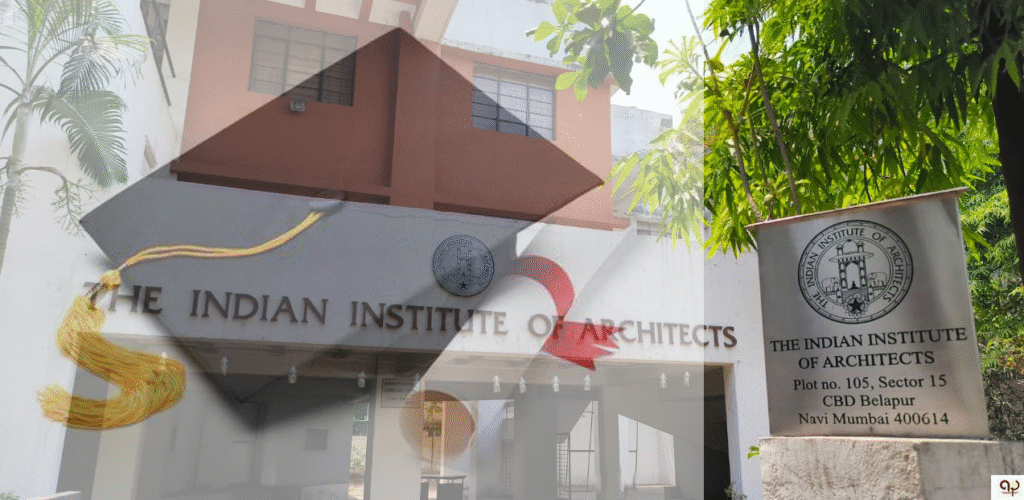The Indian Institute of Architects (IIA) that broadens access to architectural education, is offering diploma holders a government-recognized alternative to the traditional five-year Bachelor of Architecture degree.
Table of Contents
Through its Associate Membership Examination Scheme, eligible candidates can qualify as Associate Members of the IIA (AIIA)—a designation recognized by the Government of India as equivalent to a B.Arch. degree for employment in architectural roles under the Central Government.

This alternative path is especially beneficial for aspiring students who are unable to enrol in full-time architectural colleges due to financial constraints or personal commitments. It enables them to gain professional recognition while continuing their employment under licensed architects, thereby balancing academic advancement with financial sustainability.
Recognized by Government and COA
The Ministry of Human Resource Development (HRD), via Notification No. 37 dated 5th August 1992, officially recognizes the Associate Membership (By Examination) of the IIA as equivalent to a Bachelor’s degree in Architecture from a recognized Indian university. Furthermore, the Council of Architecture (COA), through its letter No. CA/5/Academic-IIA dated 14th October 2014, has approved the examination scheme and syllabus for Parts I to IV. ARCHITECTURE DEGREE
Flexible and Work-Integrated Learning Model
This scheme is an ideal solution for students who cannot pursue regular college education. It allows them to gain practical experience in the field while preparing for the IIA’s structured examination process. It not only eases the financial burden but also supports working professionals in upgrading their academic and professional standing within the architectural community.
ELIGIBILITY CRITERIA
Candidates must meet the following requirements to qualify for enrolment:
- Educational Qualification: A three-year full-time diploma (minimum 50% marks) approved by a State Government in any of the following fields:
- Architectural Assistantship
- Interior Design
- Civil Engineering
- Professional Experience (under a registered architect who is an IIA member with at least five years of experience):
- If diploma acquired after 10th Standard:
- Architectural Assistantship / Interior Design – Minimum 2 years
- Civil Engineering – Minimum 3 years
- If diploma acquired after 12th Standard:
- Architectural Assistantship / Interior Design – Minimum 1 year
- Civil Engineering – Minimum 2 years
- If diploma acquired after 10th Standard:
- Additional Requirement: Candidates must also qualify in the National Aptitude Test in Architecture (NATA) with a minimum score of 70 out of 200.
Enrolment Process
Eligible students can download the enrolment form from the IIA’s official website www.indianinstituteofarchitects.com.
Examination Centres and Schedule
The Board of Examinations (BOE) of the IIA conducts the examinations twice a year, currently held in six major cities: Delhi, Chandigarh, Lucknow, Kolkata, Chennai, and Mumbai. The admission process remains open year-round, providing flexibility for candidates to apply at their convenience.
New Policy Update: Course Completion Time Limit
Notification (23rd December 2023): In accordance with the latest decision by the IIA Board of Examinations and as per the Council of Architects (COA) norms, all students enrolled from 1st January 2024 onward must complete the IIA course of examination within a maximum period of 10 years from the date of enrolment.
Empowering the Future of Architecture
By offering a recognized, affordable, and flexible alternative to conventional architectural education, the IIA’s Associate Membership Scheme is playing a crucial role in democratizing access to the architectural profession. It empowers skilled, hardworking diploma holders to transform their field experience into formal academic recognition—ultimately bridging the gap between professional practice and academic qualification.
A Brief History of the Indian Institute of Architects (IIA)
The Indian Institute of Architects (IIA) traces its origins to the formation of the Architectural Students’ Association on May 12, 1917, at the Sir J.J. School of Art in Bombay. This initiative was led by alumni and practicing architects, with George Wittet, then Consulting Architect to the Government of Bombay, serving as its first President.
As the body grew in stature, it was renamed the Bombay Architectural Association in 1922, reflecting the increasing involvement of professional architects. The association took a major step forward in 1925 by affiliating with the Royal Institute of British Architects (R.I.B.A.), aligning Indian architectural education and practice with international standards.
On September 2, 1929, the organization was formally restructured and registered as “The Indian Institute of Architects” (IIA). Its key objectives included advancing architectural education, promoting high standards of professional practice, and uniting architects across India.
From a modest beginning in a small gathering at an art school, the IIA has grown into the premier national body representing the architectural profession in India, playing a vital role in the country’s architectural development and professional regulation. In 1929, the membership was 158. Today it has crossed the 27,000 marks.
Legal Status of the Institute
The Indian Institute of Architects is a professional body registered under the Societies Registration Act XXI of 1860, functioning as a voluntary organization for qualified architects across the country. It plays a crucial role in promoting architectural excellence and education. The only other institution operating at the national level in this domain is the Council of Architecture (COA), established under the Architects Act, 1972. The COA holds the statutory authority for the registration of architects and regulation of architectural education and professional standards in India.
